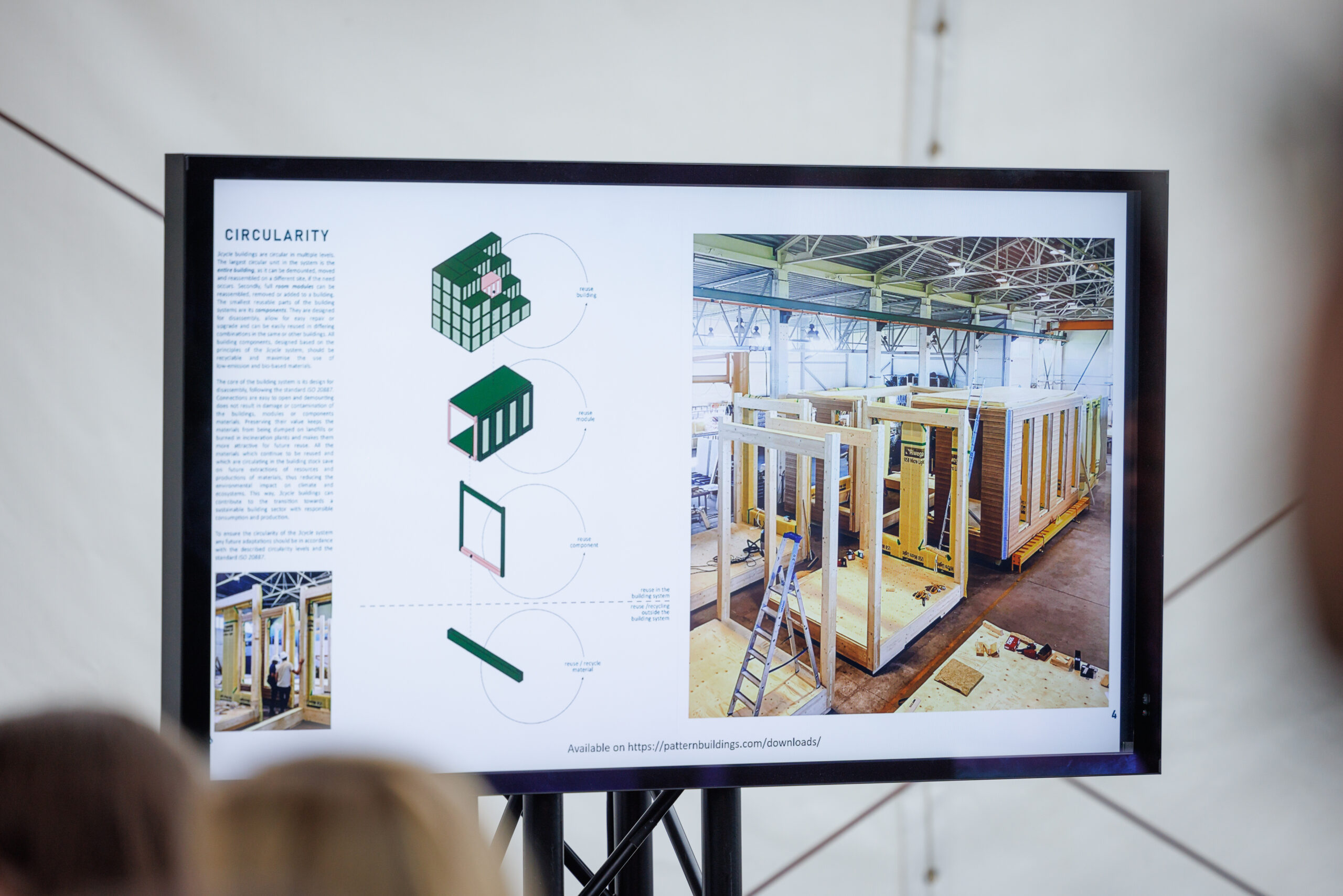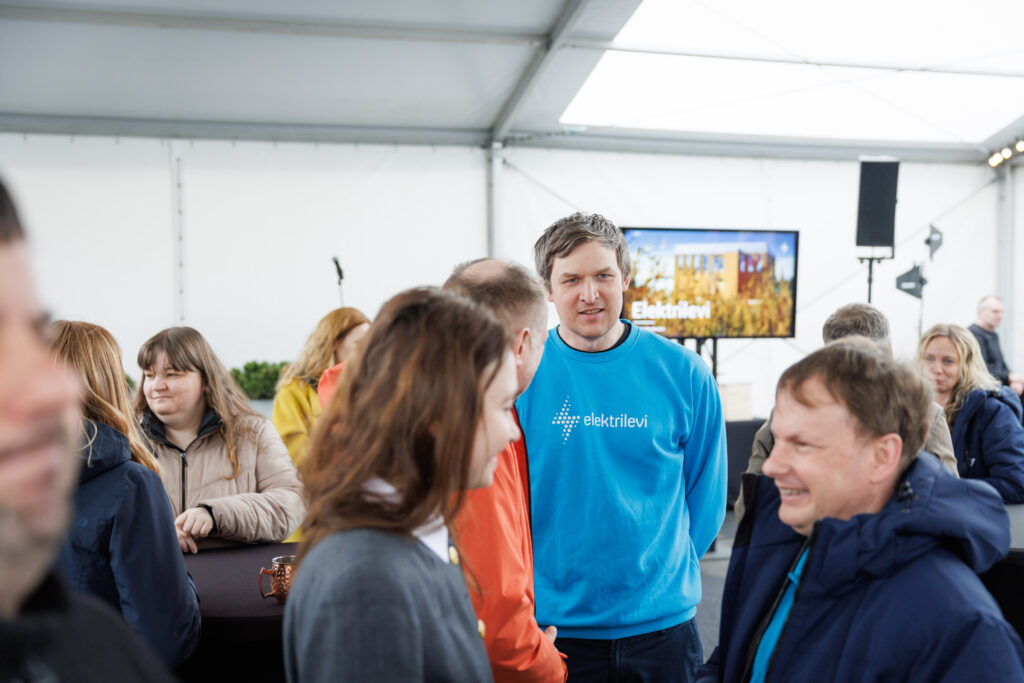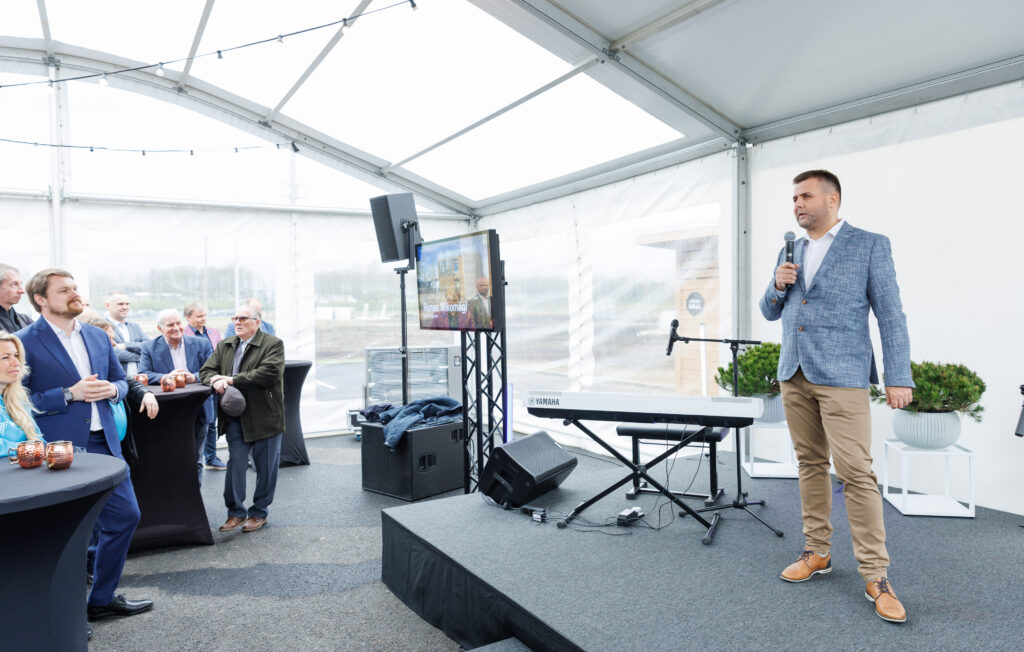Sustainability in the construction sector should no longer be a mere buzzword, without substance or clear plan for execution. With that in mind, finding application for years of scientific theory was key in the collaboration between Creatomus Solutions and Accelerate Estonia, as we spearheaded a new sustainable building design in Elektrilevi’s new training center.
Simply put, a Pattern Building is an eco-friendly construction designed with standardized components. Like LEGO blocks, the components are easy to assemble, disassemble, and reassemble, while offering the added value of greater efficiency as well as the potential to boost circular construction practices. An additional advantage of a Pattern Building is that it is designed within a system where other modular project designs are also publicly accessible.

In their efforts to lay the groundwork for Pattern Buildings to reach the masses, Creatomus, a construction technology company, created an open-source industrial building system, which brings customizable wooden buildings to the many. Despite the noble cause, the company encountered significant roadblocks when attempting to pilot the innovative solution on a larger scale.
Fortunately, overcoming roadblocks is in Accelerate Estonia’s DNA. That’s why, Accelerate Estonia team helped Creatomus to develop the standardized model in a way, in which it could be utilized for large projects.
Buzzing with ideas on how to use science to create uniformity in large systems and lower the organisation’s carbon footprint, Elektrilevi, Estonia’s largest network operator, understood that their newly planned training center, used for sharpening the skills of today’s and future electricians, should equally reflect their science-oriented mindset. Therefore, it was only natural that Creatomus’ innovative model for Pattern Buildings became the blueprint layout for Elektrilevi’s new state-of-the-art training center.

Elektrilevi’s Head of Asset Management, Rasmus Armas, highlights three main advantages of Pattern Buildings: they can be disassembled and reassembled anywhere, are easily expanded or reduced in size, owing to their modular design, and significantly lower the building’s environmental footprint with abundant use of wood.
“The construction process itself was considerably shorter,” Armas weaves another benefit to the list. “From laying of the cornerstone to the rafters, the process took about a month – on site, the house itself was built in about two weeks.”

This is a prime example of how the practical benefits of scientific innovation become truly evident once piloted in real life. Renee Puusepp, the Head of Creatomus agrees: “Creating a pilot is perhaps one of the largest and most significant phases of the system development.” With the assistance of the pilot, years of knowledge from Creatomus and EKA Puitarhitektuuri Kompetentsikeskuses (PAKK) finally resulted in successful implementation and presentation of the intended results.
EstNor’s, the manufacturer and builder of the training center, CEO Renee Mikomägi echoes the future of construction already moving towards modular methods due to its efficiency promises. “Construction (of buildings) is increasingly moved to factories, as it is more efficient to do less work on-site. The pattern building system and other similar construction styles are thus undoubtedly the future of construction.”
Pattern Building is capable of reducing CO2, accurately predicting costs and cutting down on construction time. The pilot demonstrated that constructing a circular economy building is already achievable today, using modern Estonian construction facilities. The lessons learnt from the pilot are now implemented in Creatomus’ 369 Pattern Buildings open-source system, available for the wider sector.

As part of Accelerate Estonia, Creatomus developed model house solution 369 for designing kindergartens, EKA further developed the solution into “3cycle” – a model building for the Elektrilevi training center, designed by NOMAD Architects and built by EstNor. The system development and design were coordinated by EKA Puitarhitektuuri Kompetentsikeskuses (PAKK).
Looking to break into a new market with a world changing solution, but facing legal obstacles? Give us your best (moon)shot idea and apply to Accelerate Estonia!


